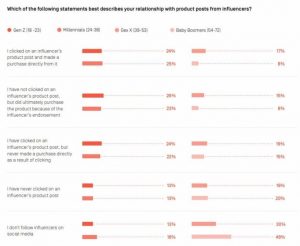Hi, Welcome
Welcome back
— March 9, 2017
Forget everything you know about giving performance feedback.
For as long as it takes to read this post, throw your 360s, PIPs and feedback sandwiches out the window.
Take a deep breath.
Now, look in the mirror. (Figuratively or literally, your choice).
Because guess what?
If someone on your team is underperforming, it has at least a wee bit to do with you. And you are the one thing you can control (um…well, most of the time, anyway).
In an interview with the Harvard Business Review, leadership guru Roger Schwarz asserts that leaders stand a better chance of motivating their talent – including under-performers – if they start with big picture results versus heading straight to individual performance.
It feels a bit like working backward, I know.
But let’s give it a go in three simple steps.
1. DETERMINE WHAT RESULTS YOU WANT FROM YOUR TEAM
Be specific.
If you can’t articulate them to yourself clearly and succinctly, Houston – we have a problem.
Meaning, if you don’t know what success looks like, chances are good no one on your team has a clue.
This doesn’t have to be a 20-page presentation.
For example, a specific result might be: I want a solution that blows our current technology out of the water.
To motivate that result, you would have to encourage certain behaviours in yourself and in your staff. Behaviours that spark creative thinking would again be an example.
But before your mind starts spinning with thoughts about that one person on your team who can’t measure up, pause. Take a breath.
2. GET CURIOUS
Ask your team a lot of questions. Questions about what might be getting in the way of their ability to deliver your desired results.
Ask yourself even more questions. Let your team know why you’re asking. Be open.
Notice if your mind is stuck in a loop about what you – or someone on your team – might or might not be capable of.
Schwarz believes that how you think is how you lead. So ask yourself one last question.
How effective is your mindset at leading your team to success?
Dr. Carol Dweck, a psychology professor at Stanford, has been studying achievement for decades.
Her research shows that genetics matter less than mindset when it comes to success. In her TED Talk, she compares the accomplishments of students with two different mindsets:
- FIXED, those who believe their intelligence is limited
- GROWTH, those who believe their potential is limitless.
Which brings us to our next task.
3. DEFINE YOUR MINDSET: LIMITED OR LIMITLESS?
How you view your own potential influences how you see your team. By now, you’re beginning to notice the relationship.
Imagine the difference between a leader who’s attached to their own ideas and one who’s available, open and curious about their team’s thought process.
If your team is stuck and not getting results, before singling out one person, consider this chain reaction:
- Your mindset drives your team’s mindset
- Both mindsets drive their behaviour
- Their behaviour drives their results
SOUNDS SIMPLE ENOUGH, RIGHT?
Let’s imagine you’ve done your due diligence on those three points.
- You’ve articulated the results you want
- You’ve cultivated a clear and honest perspective on your own mindset
- You’ve been genuinely open and curious about your team’s mindset and roadblocks
But still, there’s that one person who isn’t cutting the mustard.
It happens, and now’s the time to admit it. After you’ve done your homework.
So, given your newfound awareness, what to do? Conventional wisdom would say – pull that person aside and talk to them in private about what’s going wrong.
Oh wait.
We’re throwing all that out the window, remember? Here’s why.
IT DOESN’T WORK.
And I’m speaking from first-hand experience.
In my last management role before founding Arielle, I faced this oh-so-common leadership challenge.
I had a talented person on my team who just couldn’t stay focused on anything quite as boring as her work. Details were slipping through the cracks until another team member sat me down and told me what was happening.
They were all covering for her. And they weren’t happy about it.
Then, like a loyal corporate leader, I asked my boss for advice.
Her suggestion? Pull her aside, have a private conversation and document everything. Use the “feedback sandwich”. (Translation: insert your foul-tasting negative news inside two slices of freshly-baked positive news).
WHICH I DID.
Three things happened:
- The under-performer and I came up with some seemingly brilliant solutions to help her become more focused and organised
- The rest of my team felt alienated from this new dynamic, and the solutions we developed were still disrupting the team’s flow
- We all had the distinct feeling that my under-performer had missed the key takeaways because of the positive parts of the message (i.e. the sandwich)
THAT’S WHEN I GOT RADICAL.
Like a lightning bolt, it hit me that feedback in a vacuum doesn’t work for teams.
It was time to crack the dynamic wide open. I let my under-performer know that we needed a broader solution.
That we were going to get the whole team together to discuss who had what strengths, and how we could play to those strengths together. I made it clear that – yes – some of her issues would be out in the open.
But hey, they were anyway. Nothing left to lose.
The result?
Together, we determined that my under-performer was responsible for a lot of tasks she wasn’t good at, much less interested in. But she was great at developing big ideas.
Process, presentations, you name it…she had awesome suggestions on how to rethink things. Even better, it turns out that the employee whose role was deemed “strategic” loved execution and details.
So we shifted some work around. We played to everyone’s strengths versus dwelling on their weaknesses.
FAST FORWARD 6 MONTHS.
Six months later, my team was asked to present our case study in front of senior leadership. Everyone wanted to know how the turn-around came about.
I’ll admit that the road was bumpy. Feelings were hurt along the way – despite my best efforts. But one of my personal strengths is the ability to grow from tough lessons, so I wouldn’t take back that experience for anything.
My mindset shifted squarely from FIXED to GROWTH, with no turning back.
In Harry Potter and the Goblet of Fire, Professor Moody ordered Harry to:
“Play to your strengths.”
“I haven’t got any,” said Harry, before he could stop himself.
“Excuse me,” growled Moody, “you’ve got strengths if I say you’ve got them.”
Here’s to embracing limitless potential, wherever it turns up.
Business & Finance Articles on Business 2 Community
Irene McConnell runs Arielle Careers, a full-service personal branding agency which specialises in resume writing, LinkedIn profile writing and headshot photography. Her ideas have been featured by the BBC, Business Insider, Australian Institute of Management and Australian Institute of Company Directors.
Before starting Arielle Careers, Irene spent over… View full profile ›
(74)
Report Post





